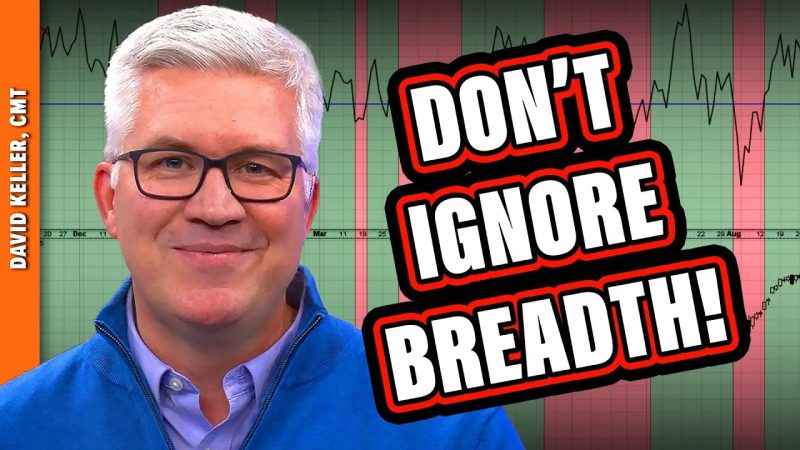## 1. The Arms Index (TRIN)
The Arms Index, also known as the TRIN (Trading Index), is a popular breadth indicator used by traders to assess market sentiment and potential short-term trends. Developed by Richard Arms in the 1960s, the TRIN is calculated by dividing the ratio of advancing issues by declining issues by the ratio of advancing volume by declining volume.
A TRIN value above 1 suggests bearish sentiment in the market, as declining issues are dominating the advancing issues, indicating a potential oversold condition. Conversely, a TRIN value below 1 indicates bullish sentiment, with advancing issues surpassing declining issues, signaling a possible overbought market.
Traders often pay close attention to the Arms Index when assessing market conditions and making trading decisions, as it provides valuable insight into the internal strength of the market beyond just price movements.
## 2. Advance-Decline Line
The Advance-Decline Line is another essential breadth indicator that helps traders gauge the overall health of the market by tracking the cumulative difference between advancing and declining issues over a specific period. This indicator provides a comprehensive view of market breadth, reflecting the participation and strength of individual stocks in the market.
A rising Advance-Decline Line indicates broad-based market strength, with a large number of stocks participating in the upward trend. Conversely, a declining Advance-Decline Line suggests weakening market breadth, with fewer stocks contributing to the market’s gains.
Traders use the Advance-Decline Line to confirm trends identified in price movements and assess the underlying strength or weakness of the market, helping them make more informed trading decisions based on broader market participation.
## 3. McClellan Oscillator
The McClellan Oscillator is a breadth indicator based on the difference between two moving averages of advancing and declining issues, typically calculated over a short-term period. Developed by Sherman and Marian McClellan, this oscillator helps traders identify overbought or oversold conditions in the market.
Positive values of the McClellan Oscillator suggest bullish market conditions, indicating that advancing issues are outperforming declining issues. Conversely, negative values indicate bearish sentiment, with declining issues overpowering advancing issues.
Traders often look for divergences between the McClellan Oscillator and price movements to identify potential market turning points or confirm existing trends, making it a valuable tool for assessing market breadth and momentum.
## 4. High-Low Index
The High-Low Index is a breadth indicator that measures the difference between new highs and new lows in the market over a specific period. This indicator provides insight into market breadth by highlighting the strength or weakness of the market based on the number of stocks reaching new highs versus new lows.
A rising High-Low Index suggests broad participation and strength in the market, with a large number of stocks hitting new highs. In contrast, a declining High-Low Index points to weakening breadth, indicating a lack of widespread strength in the market.
Traders use the High-Low Index to identify potential reversals or confirm trends, as divergences between the index and price movements can signal shifts in market sentiment and direction, helping them make more informed trading decisions.
## 5. McClellan Summation Index
The McClellan Summation Index is a cumulative breadth indicator derived from the McClellan Oscillator that helps traders assess the overall trend and momentum of the market. This index smooths out short-term fluctuations in market breadth and provides a more comprehensive view of the underlying strength or weakness in the market.
A rising McClellan Summation Index indicates sustained bullish momentum, reflecting broad participation and strength in the market. Conversely, a declining index suggests weakening breadth and potential bearish sentiment.
Traders use the McClellan Summation Index to identify long-term trends, confirm market reversals, and gauge the overall health of the market beyond just price movements. By analyzing this index, traders can make more informed trading decisions and adapt their strategies based on broader market conditions.
In conclusion, these top five breadth indicators play a crucial role in helping traders assess market breadth, sentiment, and momentum, providing valuable insights beyond price movements alone. By incorporating these indicators into their analysis, traders can gain a better understanding of market dynamics and make more informed trading decisions to navigate the complexities of the financial markets effectively.

